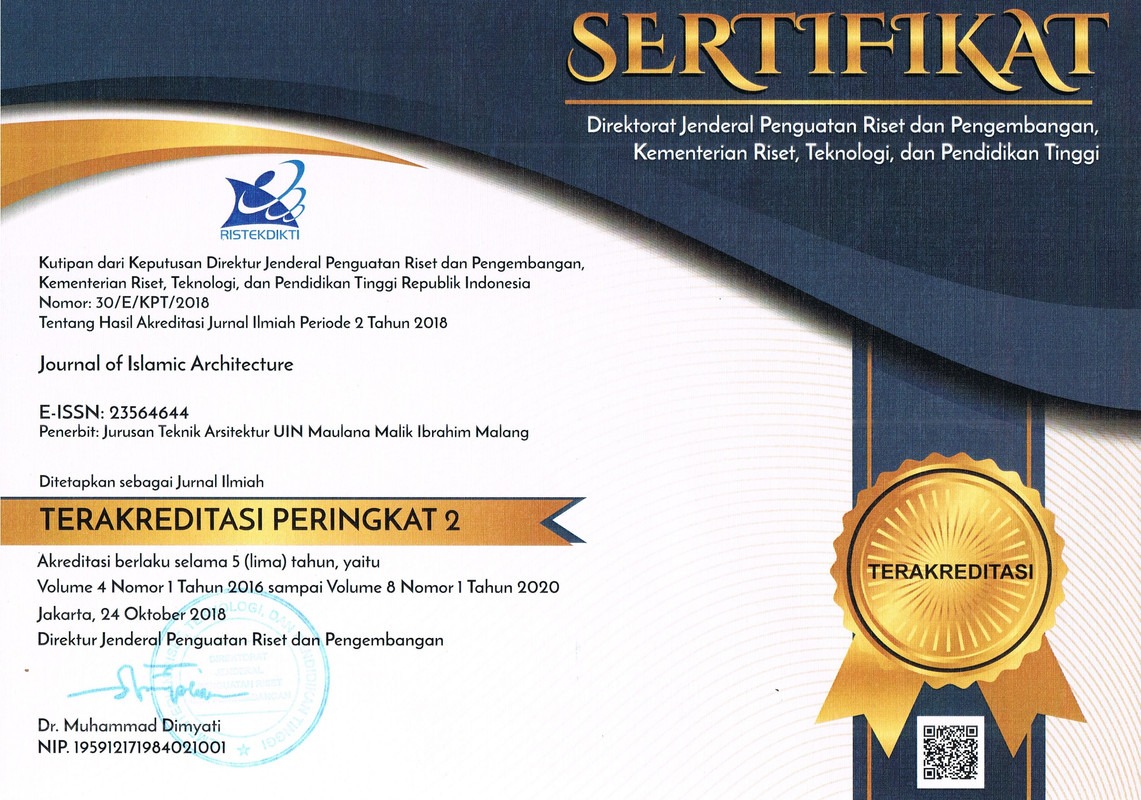Islam, Modern Society and Islamic Architecture: The Thoughts of Hijjas Kasturi
Abstract
Hijjas Kasturi is probably the most well known Malay Muslim architect in Malaysia and in Asia. He has been in practice for 50 years and is known for many of his iconic building designs throughout Malaysia and the Muslim world. This paper attempts to provide important insights into Hijjas’s ideas of Islam as a religion and its practice in the modern world. With this insight, we can better place his design approach in Islamic architecture as a product of both his modernist ideology bred from his education background and his rootedness into the Malay Muslim social and political contexts. Hijjas has been consistent in his design approach in that he had never given in to the client’s request for a more traditional approach which usually means the revivalistic or eclectic design direction. In an era when the Muslim world is struggling between the extremism of traditional Islam and modern life inn the social and political arena, it is important to look at design as part and parcel of not only an art of building but also a holistic product of the reinterpretation of the religion in a new and progressive light. This research provides Hijjas own thoughts through an interview of which excerpts from that session are used in this paper.
Keywords
Full Text:
PDFReferences
G. Mursib and M. T. M. Rasdi, Regionalisme dalam Seni Bina Malaysia: Era Moden, Pascamoden dan Global. Kuala Lumpur: Dewan Bahasa dan Pustaka, 2016.
C. C. Yoong, Ed., Post-Merdeka Architecture 1957-1987. Kuala Lumpur: Pertubuhan Arkitek Malaysia, 2007.
P. McGillick, Concrete Metal Glass: Hijjas Kasturi Associates. Singapore: Didier Millet,Csi, 2007.
R. Holod and H.-U. Khan, The Mosque and the Modern World: Architects, Patrons and Designs Since the 1950s. London: Thames & Hudson Lt, 1997.
M. T. M. Rasdi, Architecture and Nation Building: Multiculturalism and Democracy. Singapore: Partridge, 2015.
DOI: https://doi.org/10.18860/jia.v4i4.4468
Refbacks
- There are currently no refbacks.






